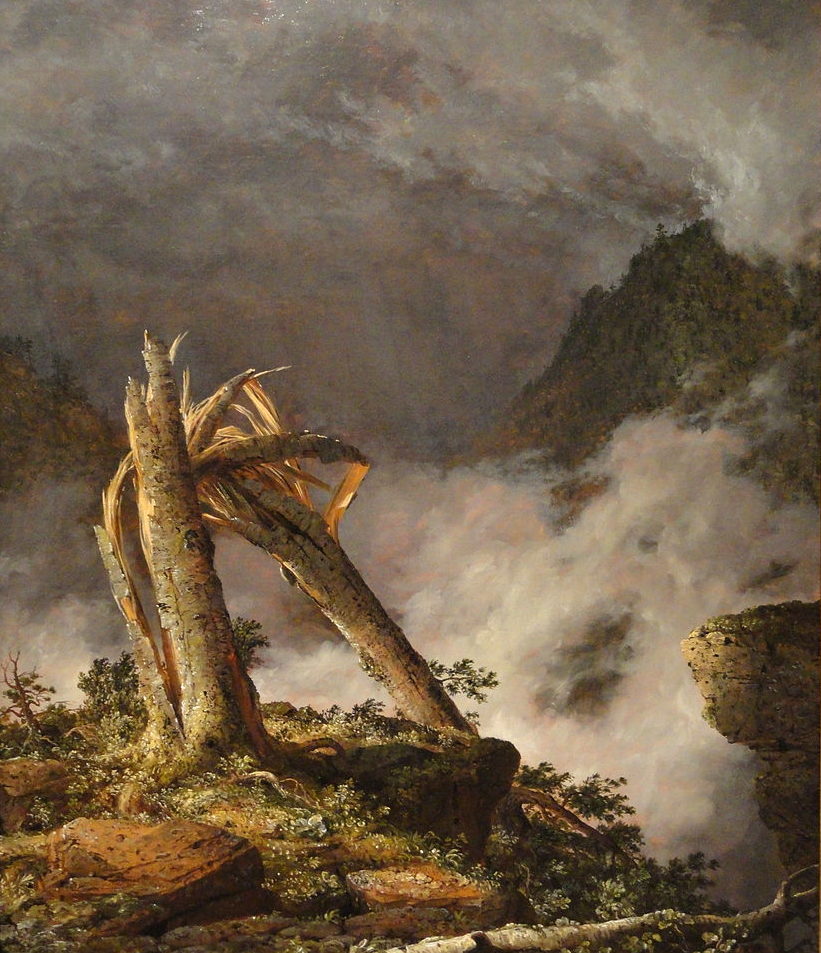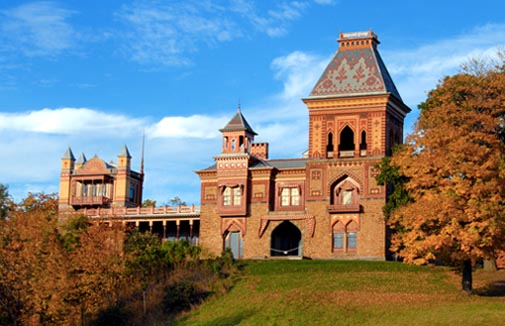Frederic Church – America’s Painter and Activist
Frederic Edwin Church (1826-1900) – The painter as political and environmental activist

Featuring the Stars and Stripes of the Union Flag and the Northern Star
The events of the last week prompted me to share the painting above, Our Banner in the Sky, by Frederic Edwin Church (1826-1900). Painted at a time when the sovereignty of the United States was at stake, shortly after the attack that sparked the Civil War in April of 1861.
Union outrage at the Confederate assault on Fort Sumter, South Carolina, had been stoked by the insult to the nation’s flag, torn by shell fire even after the white cloth of surrender went up. In reaction, a massive rally was formed in New York’s Union Square, where the battle-worn Sumter banner was raised aloft, and the indignant crowds waved the stars and stripes. Weeks later Church dashed off a celestial vision of a Union flag composed of parallel bars of scarlet clouds parting to reveal a starry firmament, an image he developed from such earlier works as Twilight, a Sketch painted in the 1850s. His picture dealer had the work, titled Our Banner in the Sky, made into lithographs which sold briskly in the following months. Only once more, and then only as a special request from a private collector, did Church produce anything so baldly patriotic as Our Banner in the Sky. Yet his subsequent major landscape paintings can be read like a barometer of the war. 1
The dormant Civil War drums rumble, awakened on January 6th, 2021
When a mob of misinformed and misled marauders plundered the Capitol. Breaking barriers and injuring police the horde broke down doors and windows, laying siege to a Congress in session to certify the electoral vote. Even after the invasion on Congress, 147 Republicans supported the objection to the electoral vote.
“A house divided against itself cannot stand.” I believe this government cannot endure, permanently half slave and half free. I do not expect the Union to be dissolved – I do not expect the house to fall – but I do expect it will cease to be divided. It will become all one thing, or all the other.”
Abraham Lincoln at the Republican State Convention, Springfield, Illinois June 16, 1858.
As I write we are days away from the inauguration of a new president. The nation’s and all the state’s Capitol buildings are under threat by individuals. Shrapnel and festering wounds of five generations since the Civil War ended 160 years ago. Blinded by ignorance and arrogance these Americans chose to wield their arsenals in an anarchy of hate and fear.
Church’s painting serves as a reminder that ultimately we need to face our collective past, our imperfect beginnings, and egregious missteps. Our nation under one banner is doomed if we allow ill sentiment to flourish. We must all be accountable – no denial or accepting the unacceptable.

Landscape painter and environmentalist. The sublime power of nature.
The dead tree, Church’s nod to generations of landscape artists, can be found in many of his paintings. Including his teacher Thomas Cole and European predecessors. Acknowledging the sublime power and beauty of nature, the impermanence of time and man’s blot upon all. During Church’s time there was still plenty wilderness in America and yet there were already signs of man’s scourge. The tearing down of trees, natural habitats, and spewing toxins into the air and water.
Much of Church’s inspiration came from the Hudson River Valley near his home in Olana. He was also inspired by emerging thought, science, and exploration. Church’s interests lead him to painting excursions in South America, Jamaica, the Middle East, Maine and the Arctic circle.
“Are we not justified in hoping that landscape painting will flourish with a new and hitherto unknown brilliancy when artists of merit shall…be enabled, far in the interior of continents, in the humid mountain valleys of the tropical world, to seize, with the genuine freshness of a pure and youthful spirit, on the true image of the varied forms of nature?”
Alexander von Humboldt, “Cosmos: Sketch of a Physical Description of the Universe”.
By Alexander von Humbolt, S. America journey from 1799-1804
Cosmos: Sketch of a Physical Description of the Universe
The writings of naturalist Alexander von Humboldt prompted Church to make two treks to South America. A more in depth discussion is found in the book, ‘Frederic Edwin Church”, written by Franklin Kelly, with an essay by Stephen Jay Gould, “Church, Humboldt, and Darwin: The Tension and Harmony of Art and Science”. The complete book is in the PDF below. Humbolt died in 1859, the year that Darwin’s “On the Origin of Species”, was published.
The sketches and journals that he created on his journeys to South America served his ambitious painting, Heart of the Andes, below. The painting was framed as if on stage; binoculars were encouraged to look at the far way places in the painting. Brochures featuring the new topics of meteorology, geology and botany were distributed. The painting toured through London and nine American cities. In New York, there was a ¢25 admission and a line that went around the block.
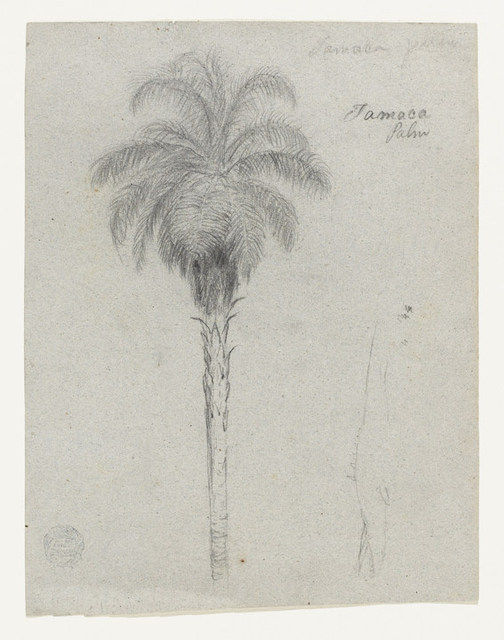
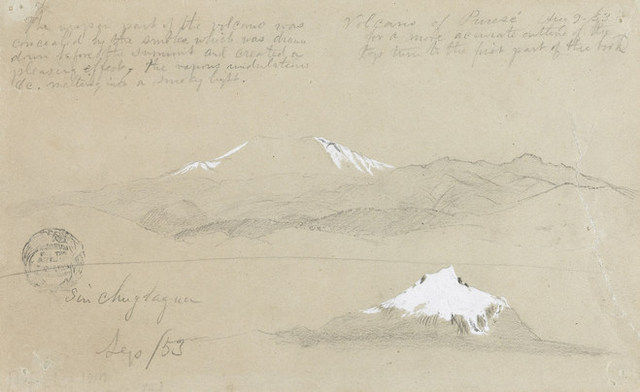
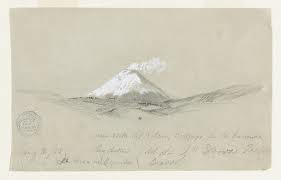

“The altitude was too great to permit boiling water to have heat enough to cook food and so we dined on toast and chocolate/ mildly warmed. It was excellent and keenly relished.
Quipo assured me that the Volcano was still very distant and as we were in a sort of bowl among the mountains which [sic] raised their hoary heads around us I knew I could get no view of Sangai that night without a scramble and as there was still a couple of hours of day light I grasped my sketch book and commenced ascending the hill which rose between us and the Volcano.”
Excerpt from Church’s journal, Collection Olana State Historic Site, New York State Office of Parks, Recreation and Historic Preservation
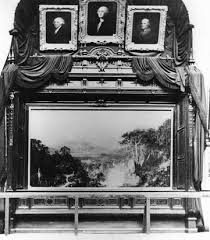
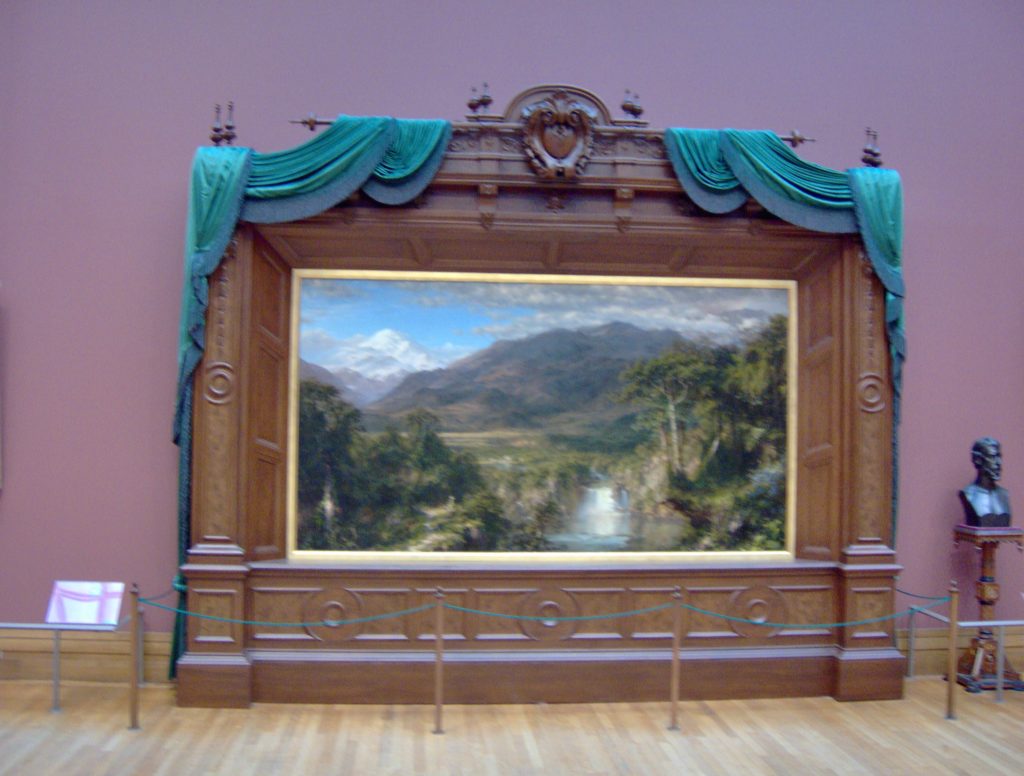
As a landscape painter, Frederic Church has had a most profound effect on my work, not only for his visual mastery of color, light and ability to create vast space, or his audacity in self promotion but because of his philosophical insights in aligning scientific accuracy and query with his subject matter and for his great reverence for nature itself.
It was the sketches that caught my attention when visiting Olana. They were fresh, simple abstractions of the landscape made from observation. Church never did a studio painting of this view. I often will paint studies from nature to stay honest – to keep a keen eye. These sketches inform me when creating a studio painting and every so often can stand on their own.
I first discovered Olana on a trip to the Thomas Cole Museum just across the Hudson River. The house is set upon beautiful grounds with a sweeping view of the Hudson River and Catskills. All of which was fertile ground for many of Church’s grand paintings.
“To observe nature closely is to follow the finger of God”.
John Ruskin, English Critic, 1819-1900
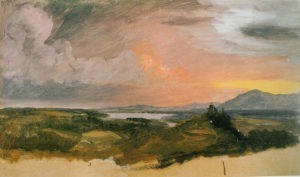
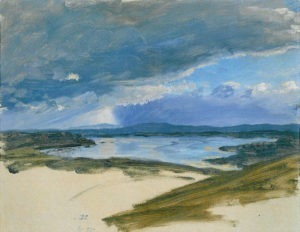
At Left: Frederic Edwin Church, “Sunset in Hudson Valley”, ca. 1870, Oil on paper, 12×20 in., Cooper-Hewitt Museum, Smithsonian Institution
At Right: Frederic Edwin Church, “Bend in the River” from Olana, c. 1870-73, oil on off-white academy board, 10 3/8 x 13 7/8 in.
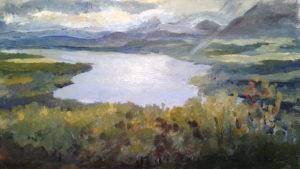
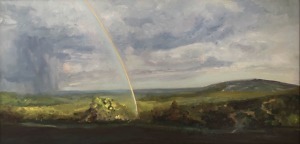
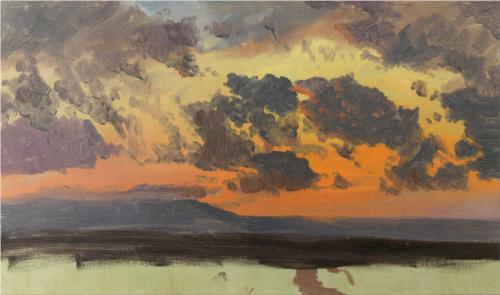
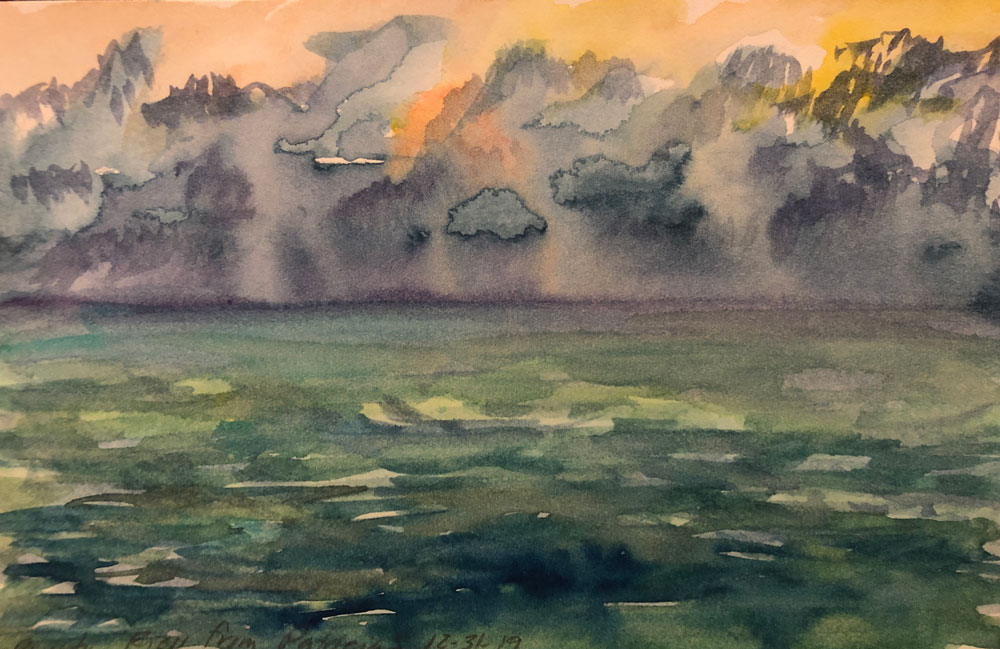
At left: Frederic Church, 1865 Jamaica oil sketch, “…the vegetation, next to that on the Magdalena River, the finest I ever saw –– The ferns, especially in the region known as Fern Walk — excelled every place…”
At Right: Jill Nichols, The water merges with the air off the tropical island of Puerto Rico. The similarity in colors to Church’s work is coincidental, I was merely recording the colors as seen.
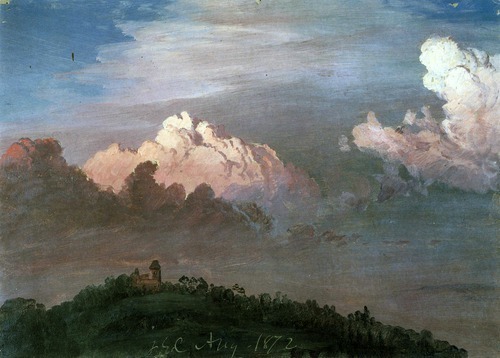
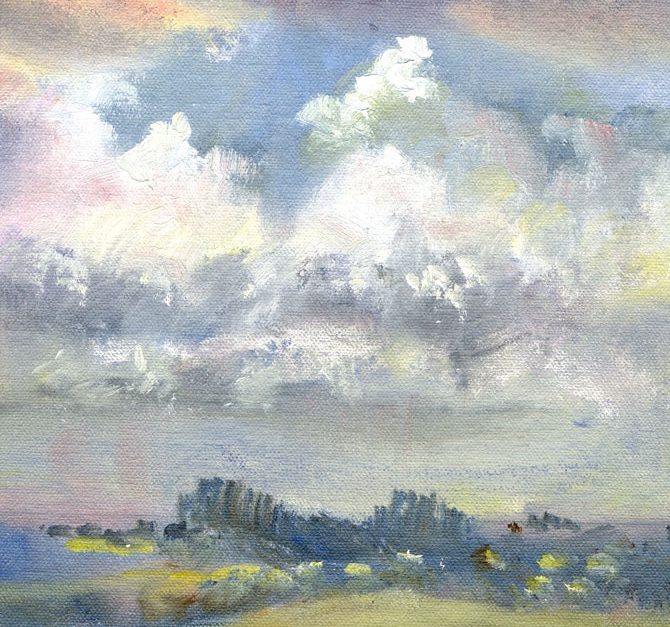
To see more of Jill’s landscape paintings and sketches please visit her Landscape Gallery
Read about Jill’s Washington D.C. Commission and James Comey
You may also enjoy John Walsh’s lecture on Frederic Edwin Church
1 Kevin J. Avery, senior research scholar at The Metropolitan Museum of Art and an adjunct professor at Hunter College, City University of New York. Rally ‘Round the Flag: Frederic Edwin Church and the Civil War , May 26 through October 30, 2011. With this exhibition, Olana participated in a multiyear commemoration of the Civil War, with related regional and national exhibitions, events, and programs being planned by many institutions. The exhibition was funded by The Olana Partnership, the not-for-profit support arm of Olana State Historic Site and a generous grant from The Lois H. and Charles A. Miller Jr. Foundation. Olana, the Churches Persian-inspired home and 250-acre estate, is owned and operated by New York State Office of Parks, Recreation and Historic Preservation. To learn more, please call 518.828.0135 or visit www.olana.org.
Please leave a comment below or contact Jill via email.
Please visit Jill’s Facebook Fine Art page for updates.
